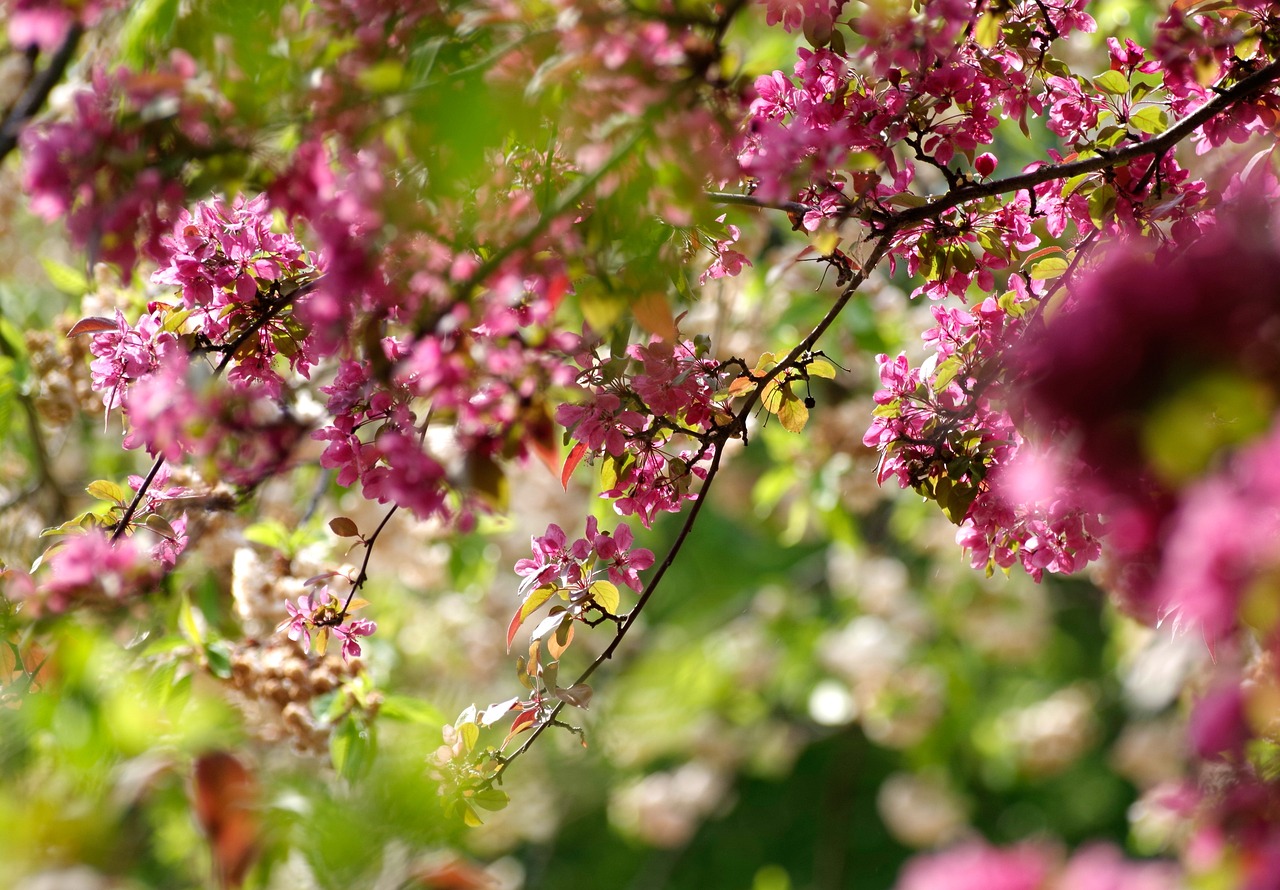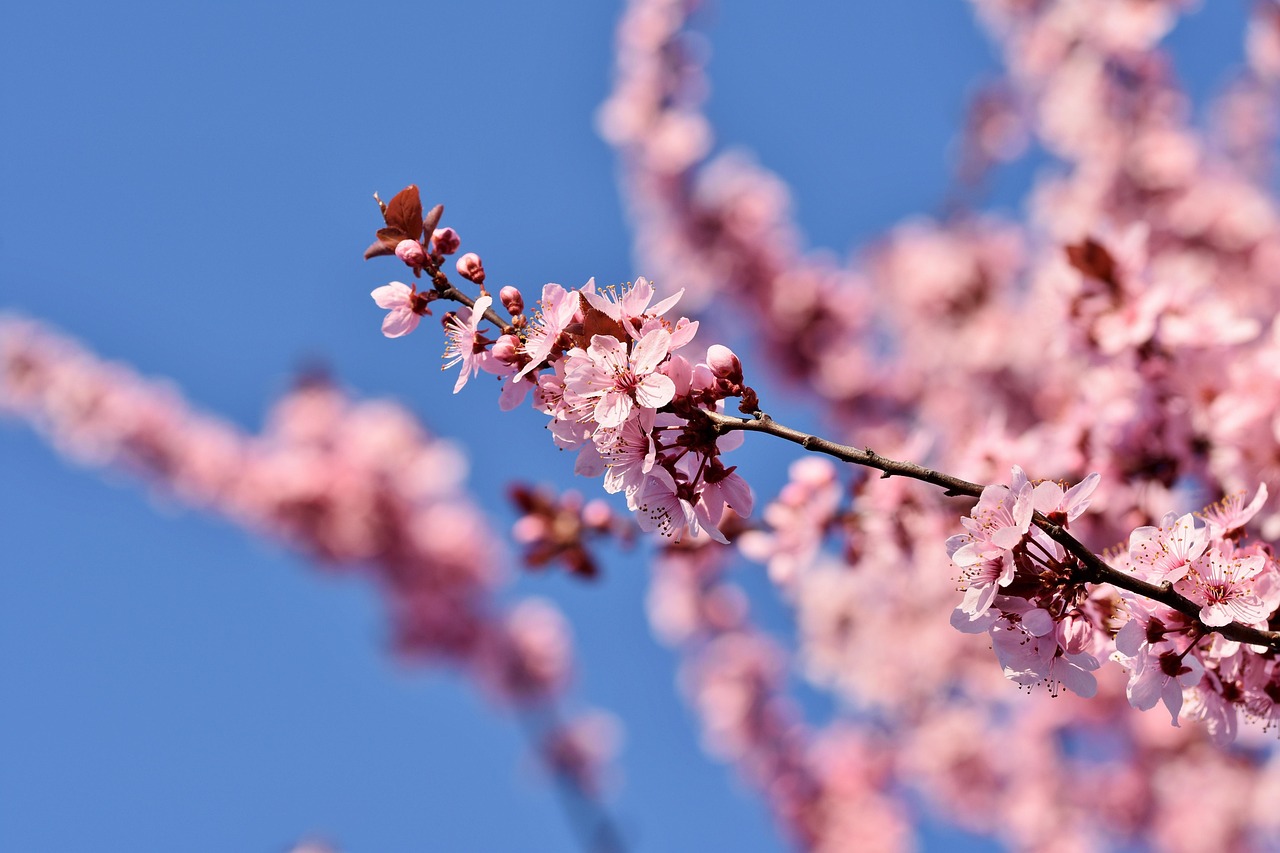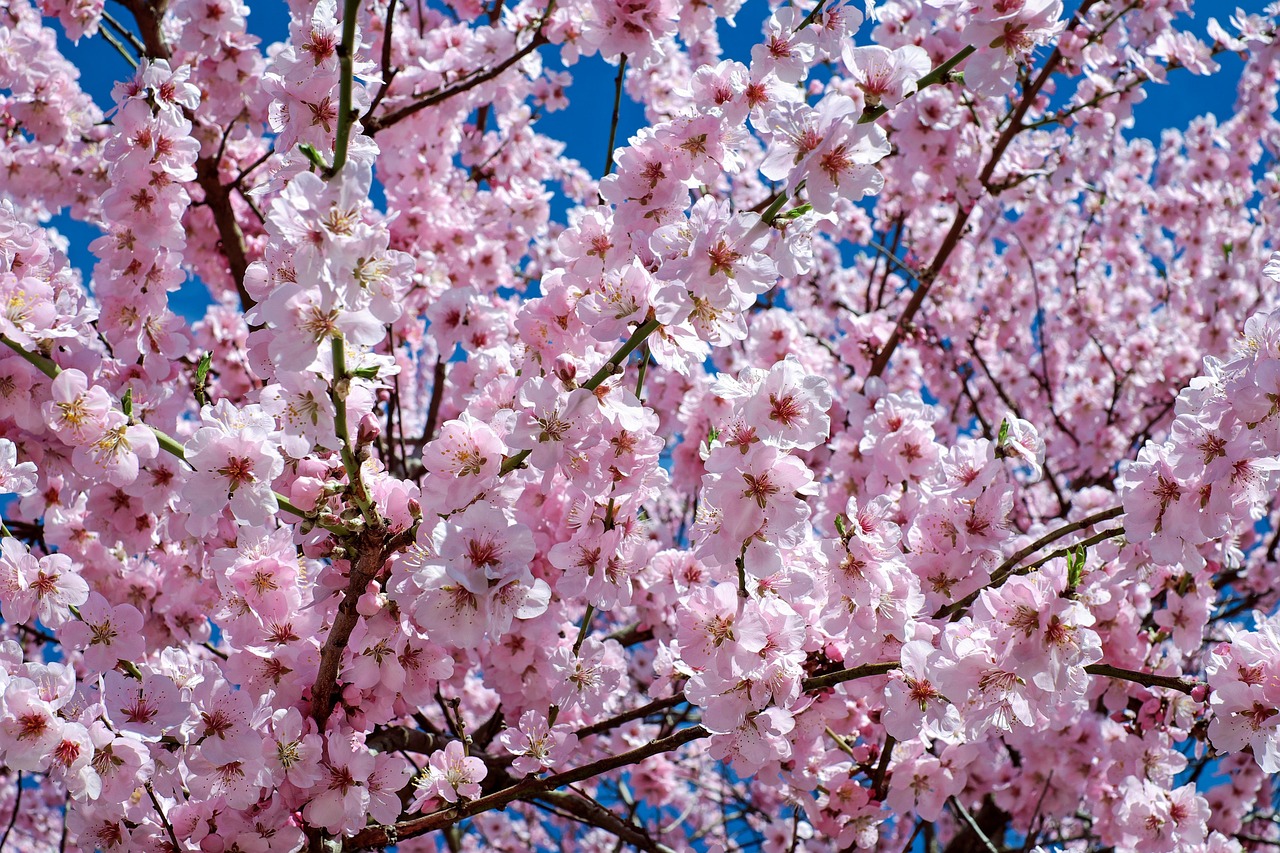Cherry tree pruning involves several methods that enhance growth and fruit production. The most effective techniques include thinning cuts, heading cuts, and renewal pruning. Implementing these methods during the correct seasons ensures optimal health and yield for cherry trees.
Cherry trees are beloved not only for their stunning blossoms but also for their delicious fruit. Pruning is a crucial practice for maintaining the health, shape, and productivity of cherry trees. Proper pruning allows sunlight to penetrate the canopy, which promotes healthy growth and helps prevent diseases. It also facilitates better air circulation, reducing the risk of fungal infections.

Understanding the right timing and techniques for pruning cherry trees can significantly impact their performance. Different species of cherry trees may require specific approaches, but general principles apply to most of them. Below are some important pruning methods that every cherry tree owner should know.
Key Pruning Methods for Cherry Trees
Cherry tree pruning can be divided into several key methods. Each method serves a unique purpose and should be employed at different times throughout the growing season. Here are the most common techniques:
- Thinning Cuts: This method involves removing entire branches to improve airflow and light penetration within the tree. Thinning cuts help in shaping the tree and reducing overcrowding.
- Heading Cuts: Heading cuts are used to shorten branches and encourage bushier growth. This technique is often used on young trees to promote a strong framework.
- Renewal Pruning: This method focuses on removing older wood to stimulate new growth. It is particularly effective for trees that have not been pruned in several years.
Timing is essential for effective pruning. The best time to prune cherry trees typically falls in late winter or early spring before new growth begins. This timing minimizes stress on the tree and helps it heal quickly from cuts. Alternatively, some pruning can be done after harvest in late summer or early fall to maintain shape and health.

The following table outlines the key pruning methods along with their purposes and ideal timing:
| Pruning Method | Purpose | Ideal Timing |
|---|---|---|
| Thinning Cuts | Improve airflow and light penetration | Late winter to early spring |
| Heading Cuts | Encourage bushier growth | Late winter to early spring |
| Renewal Pruning | Stimulate new growth | Late summer to early fall |
In addition to these methods, it is important to use the correct tools when pruning cherry trees. Sharp, clean tools reduce damage to the tree and help prevent disease transmission. Common tools include bypass pruners for small branches, loppers for thicker limbs, and saws for larger cuts. Always sanitize your tools before use to minimize the risk of infection.
When performing any pruning, it is crucial to make clean cuts at a slight angle, allowing water to run off and preventing rot. Avoid leaving stubs, as they can become entry points for pests and diseases. Instead, cut back to a lateral branch or bud whenever possible.

Cherry trees can also benefit from regular maintenance beyond pruning. Fertilizing, watering, and monitoring for pests or diseases are essential practices that complement pruning efforts. Ensuring that your cherry tree receives adequate nutrients will support its recovery from pruning and enhance its overall health.
As seasons change, so do the needs of your cherry tree. Awareness of these needs allows you to adjust your care practices accordingly. Proper seasonal care, including timely pruning, will set your tree up for success in producing abundant blossoms and fruit in the upcoming seasons.
The beauty of cherry trees lies not only in their aesthetic appeal but also in their ability to provide delicious fruit. By mastering the art of pruning and understanding the seasonal requirements, you can enjoy the full benefits of these magnificent trees.

Understanding Cherry Tree Growth Stages
To effectively prune cherry trees, it is essential to understand their growth stages. Each stage has unique characteristics and care requirements. Recognizing these stages helps determine the best times for pruning and other maintenance tasks.
Young Cherry Trees
In the first few years after planting, cherry trees are considered young. During this stage, the focus should be on establishing a strong framework. Pruning in this phase promotes healthy branch development and shapes the tree for future growth. Here are some key points regarding young cherry trees:
- Establishing Structure: Encourage a central leader and well-spaced lateral branches.
- Light Pruning: Perform light pruning to remove any crossing branches or weak growth.
- Avoid Heavy Cuts: Limit extensive pruning to avoid stressing the young tree.
Mature Cherry Trees
Once cherry trees reach maturity, typically around 4 to 6 years old, they require different care. At this stage, it is crucial to maintain their shape and health while ensuring they produce abundant fruit. The following practices are essential for mature cherry trees:
- Thinning: Remove crowded branches to improve air circulation and light exposure.
- Heading Back: Shorten overly long branches to encourage bushier growth.
- Monitor Health: Keep a close eye on pests and diseases that can affect older trees.
Old Cherry Trees
Cherry trees over ten years old enter a stage where they may need special care and rejuvenation. Old trees can become less productive or suffer from structural issues. Here are some strategies to help restore vitality:
- Renewal Pruning: Gradually remove older branches to stimulate new growth.
- Minimize Stress: Avoid heavy pruning in one season; spread it over several years.
- Fertilization: Apply fertilizer to support recovery and improve fruit production.
The Importance of Timing in Pruning
The timing of pruning significantly influences the health and productivity of cherry trees. Understanding seasonal changes helps determine when to implement various pruning methods effectively.
Winter Pruning
Winter is often considered the best time for major pruning activities. During this dormant period, trees are less susceptible to stress and diseases. The benefits of winter pruning include:
- Easier Visibility: With no leaves, it is easier to assess the tree’s structure.
- Reduced Disease Risk: Fungal infections are less likely during the cold months.
- Encouragement of Growth: Trees can focus energy on new growth in spring.
Summer Pruning
Summer pruning can also be beneficial, particularly for maintaining shape and removing excess growth. This method is typically less intensive than winter pruning. Key aspects of summer pruning include:
- Control Growth: Trim back vigorous shoots to maintain size and shape.
- Enhance Light Exposure: Open up the canopy to allow sunlight to reach all areas of the tree.
- Avoid Stress: Limit heavy pruning during this time to prevent stress on the tree.
Pest and Disease Management in Pruning
Pests and diseases can severely impact cherry trees if not managed properly. Pruning is an opportune time to inspect for signs of trouble. Here are some common issues to watch for:
Pests
Pests such as aphids, spider mites, and cherry fruit flies can damage trees and fruit. Regular inspections during pruning can help identify infestations early. Control methods include:
- Physical Removal: Hand-pick pests when possible.
- Pesticides: Use organic or chemical pesticides as needed, following label instructions.
- Dormant Oil Treatments: Apply in late winter to control overwintering pests.
Diseases
Diseases like brown rot, powdery mildew, and bacterial canker can affect cherry trees. Signs of disease often become evident during pruning sessions. Preventative measures include:
- Cleansing Tools: Always sanitize tools between cuts to prevent disease spread.
- Anatomical Knowledge: Understand which cuts promote healing and reduce infection risk.
- Disease-Resistant Varieties: Consider planting varieties that are less susceptible to common diseases.
Caring for cherry trees requires a mix of knowledge about growth stages, optimal timing for pruning, and pest management strategies. Understanding these factors will ensure that your cherry trees remain healthy and productive for many seasons to come.
Tools and Techniques for Pruning Cherry Trees
To achieve optimal results when pruning cherry trees, it is essential to use the right tools and techniques. The choice of tools and understanding the proper methods can make a significant difference in the health and appearance of your trees.
Essential Pruning Tools
Using sharp, clean tools is crucial for making precise cuts that promote healthy healing. Here are some essential tools for pruning cherry trees:
- Bypass Pruners: Ideal for making clean cuts on small to medium branches. They work like scissors, providing a smooth cut.
- Loppers: Best for thicker branches that are too large for pruners. They offer leverage to cut branches up to 2 inches in diameter.
- Pruning Saw: Necessary for larger limbs that require more power. A sharp pruning saw can handle branches over 2 inches in diameter.
- Hand Saw: Useful for detailed work in smaller areas or for cutting thicker branches in tight spots.
- Pole Pruner: An extendable tool that helps reach high branches without the need for a ladder.
Before using any tools, ensure they are sanitized to prevent disease transmission. This can be done by wiping blades with rubbing alcohol or a bleach solution.
Pruning Techniques
Effective pruning techniques are vital for maintaining the health and productivity of cherry trees. Here are some commonly used methods:
1. Making Clean Cuts
Always make clean cuts at a slight angle. This promotes faster healing and reduces the risk of rot. Avoid leaving stubs, as they can become entry points for pests and diseases.
2. Understanding Growth Directions
When pruning, pay attention to the direction in which branches are growing. Cuts should encourage outward growth rather than inward, which can lead to overcrowding. Here are some tips:
- Cut Above Buds: Make cuts just above a bud that faces outward to encourage growth away from the center of the tree.
- Avoid Over-Pruning: Remove no more than 20% of the tree’s canopy in a single season to avoid stressing the tree.
3. Thinning vs. Heading Cuts
Understanding the difference between thinning cuts and heading cuts is essential:
- Thinning Cuts: Involves removing entire branches back to their origin. This method increases light penetration and air circulation.
- Heading Cuts: Involves cutting back a branch to a bud or lateral branch. This encourages new growth but should be done sparingly to avoid excessive bushiness.
The Role of Fertilization in Pruning
Fertilization plays a crucial role in the overall health of cherry trees, especially after pruning. Proper fertilization supports recovery and enhances growth. Here are important aspects to consider:
Understanding Nutritional Needs
Cherry trees require essential nutrients such as nitrogen, phosphorus, and potassium. Each nutrient serves a unique purpose:
- Nitrogen: Promotes leaf and shoot growth.
- Phosphorus: Supports root development and flowering.
- Potassium: Enhances fruit quality and overall tree health.
When to Fertilize
The timing of fertilization is critical, particularly after pruning. Here are some guidelines:
- Early Spring: Apply a balanced fertilizer just before new growth begins to give trees a nutrient boost.
- Post-Pruning: Fertilize after major pruning in late winter or early spring to support recovery.
Types of Fertilizers
Selecting the right type of fertilizer can significantly impact tree health. Here are common options:
- Granular Fertilizers: Slow-release options that provide nutrients over time.
- Liquid Fertilizers: Quick-acting solutions for immediate nutrient uptake.
- Organic Options: Compost or well-rotted manure can improve soil structure and nutrient content sustainably.
Seasonal Care Beyond Pruning
Caring for cherry trees involves practices beyond pruning and fertilization. Seasonal care includes watering, mulching, and monitoring for pests and diseases throughout the year.
Watering Practices
Irrigation is critical, especially during dry spells. Here are effective watering practices:
- Deep Watering: Water deeply but infrequently to encourage deep root growth.
- Avoid Overwatering: Ensure proper drainage to prevent root rot.
- Irrigation Systems: Consider using drip irrigation for efficient water delivery.
The Role of Mulching
Mulching around cherry trees offers several benefits, including moisture retention and weed suppression. Choose organic materials such as wood chips or straw. Maintain mulch thickness of about 2-4 inches but keep it away from the trunk to prevent rot.
Pest Monitoring
Pest management is an ongoing process that requires vigilance throughout the growing season. Regularly inspect leaves and fruit for signs of infestation. Implement integrated pest management strategies to control issues effectively while minimizing harm to beneficial insects.
Caring for cherry trees year-round, with a focus on proper pruning techniques, fertilization, watering, mulching, and pest management, will contribute significantly to their overall health and productivity.
Advanced Techniques for Pruning Cherry Trees
As you become more experienced in cherry tree care, you may want to explore advanced pruning techniques that can further enhance the health and productivity of your trees. These methods require a deep understanding of tree physiology and growth patterns, but they can yield significant benefits.
Espalier and Fan Training
Espalier is a technique that involves training cherry trees to grow flat against a wall or trellis. This method maximizes sunlight exposure and air circulation while minimizing space requirements. Here are some steps to implement this technique:
- Selecting the Right Variety: Choose a variety that is well-suited for espalier, such as dwarf or semi-dwarf types.
- Initial Training: Begin training when the tree is young by tying branches to a trellis or wall in desired positions.
- Regular Pruning: Maintain the shape through regular pruning, focusing on lateral growth and removing any unwanted vertical shoots.
Fan training is similar but involves spreading branches out in a fan-like shape to create an open center. This method allows for better light penetration and easier access for harvesting.
Renovation Pruning
If your cherry trees have become overgrown or unproductive, renovation pruning can help restore their health. This method involves drastic cuts to encourage new growth. Here are some tips for successful renovation pruning:
- Assess Health: Ensure the tree is healthy enough to withstand heavy pruning; look for signs of disease or severe damage.
- Timing: Perform renovation pruning during dormancy, typically in late winter or early spring.
- Progressive Cuts: Remove one-third to one-half of the tree’s height and thin out crowded branches to promote new growth.
Using Growth Regulators
For professional growers, plant growth regulators can be used to manage tree growth more effectively. These chemicals can influence tree shape and fruit set, though they should be used with caution. Consult with local agricultural extensions or experts before applying any growth regulators.
Environmental Factors Affecting Cherry Tree Health
Cherry trees are sensitive to environmental conditions, which can significantly impact their growth and productivity. Understanding these factors will help you provide better care.
Soil Quality
The soil in which cherry trees are planted should be well-draining and rich in organic matter. Conducting a soil test can help determine nutrient levels and pH balance. Ideal soil conditions include:
- pH Levels: Cherry trees prefer slightly acidic to neutral soil (pH 6.0-7.0).
- Nutrient-Rich Soil: Incorporate compost or well-rotted manure to improve soil structure and nutrient availability.
Climate Considerations
Cherry trees thrive in temperate climates with distinct seasons. They require a certain number of chill hours during winter for proper blooming. Here are some climate factors to consider:
- Frost Risks: Protect blossoms from late frosts by covering trees or using frost cloths if necessary.
- Heat Stress: Provide adequate watering during hot summer months to prevent stress and fruit drop.
Community and Education Resources
Caring for cherry trees can be a rewarding experience, but it also requires ongoing education and support. Many resources are available for both novice and experienced gardeners. Here are some valuable resources:
- Local Cooperative Extensions: Many regions have cooperative extension services that offer workshops, publications, and expert advice on fruit tree care.
- Online Forums and Communities: Engage with other cherry tree enthusiasts through gardening forums, social media groups, and local clubs.
- Books and Guides: Consider investing in books focused on fruit tree cultivation and pruning for deeper insights into specialized techniques.
Conclusion
Cherry tree pruning is a vital practice that contributes significantly to the health and productivity of these beautiful trees. By understanding the various pruning methods, recognizing seasonal care needs, and employing effective maintenance strategies, you can ensure your cherry trees thrive and produce abundant fruit.
Key takeaways include the importance of proper timing and techniques for pruning, the role of fertilization and pest management, and the benefits of advanced training methods like espalier. Additionally, recognizing environmental factors such as soil quality and climate conditions will further enhance your ability to cultivate healthy cherry trees.
Caring for cherry trees requires dedication, knowledge, and effort. By applying these principles, you can enjoy the beauty of their blossoms and the sweetness of their fruit for years to come. Whether you’re a novice gardener or an experienced grower, the joy of nurturing cherry trees will always yield rewarding results.
